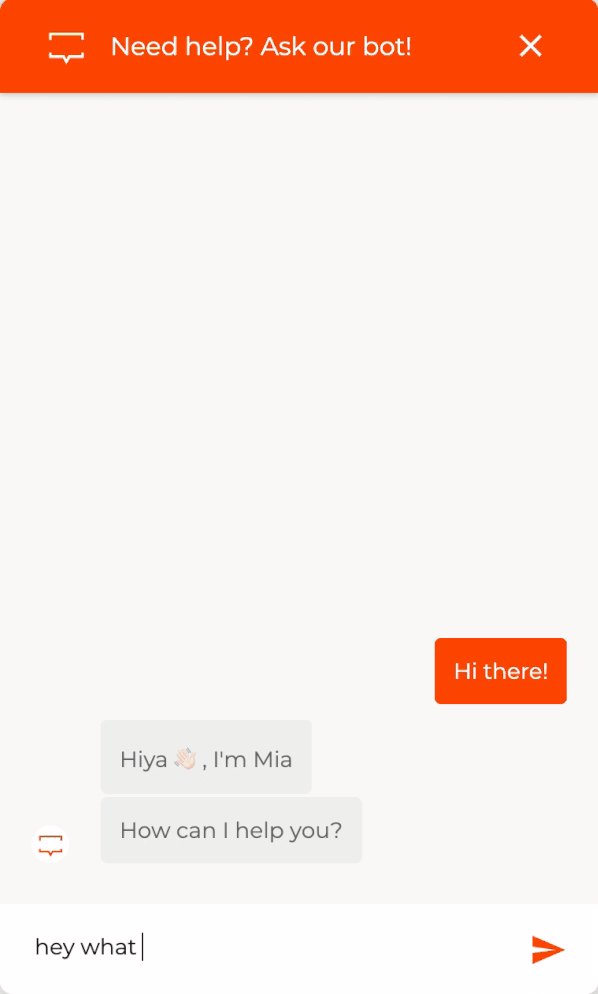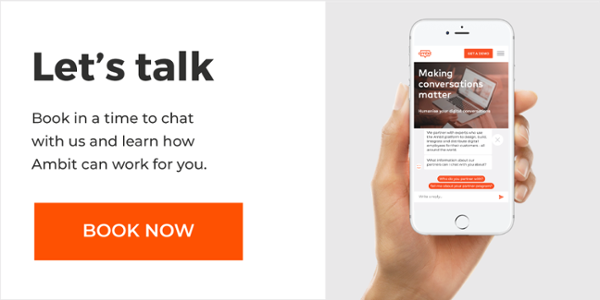Today, personalised automation and customised online shopping experiences are vital to the success of any business' customer experience – and it's a necessity in today's increasingly competitive landscape.
Take a look under the hood of most businesses that use chatbots and AI-driven interactions, and you'll see that many of them are not utilising the full capabilities of deep-level personalisation that most customers now expect.
In this blog, you'll learn why personalised automation is crucial in this highly competitive world, why you need to personalise and customise a digital employee for optimal customer experience, and learn what the difference between the two is.
If you want to cut to the chase and see what an Ambit Digital Employee can do for your business, have a chat to sales here.
Key insights discussed in this blog:
-
- What is personalisation in eCommerce?
- What is the difference between a digital employee and a chatbot?
- Why is eCommerce personalisation important?
- Personalisation and customisation in eCommerce
- Can a chatbot recognise a returning customer?
- Does my chatbot have conditional responses built in?
- Why should I care about personalisation for my digital employee?
 A personalised experience for a customer using an online financial service.
A personalised experience for a customer using an online financial service.
What is personalisation in eCommerce?
ECommerce personalisation is the practice and process of delivering exceptional, personalised experiences on ecommerce websites to your customers through:
-
- Relevant, dynamic content
- Product recommendations specific to their interests
- Products related to their purchase history
- Demographics
- Any other related behavioural data that enriches their customer experience
Personalisation in eCommerce is valuable for any business as it builds a feeling of trust between the business and the consumer. It allows your company to present your customers with a unique experience that is tailored to their needs and interests, instead of just having one generic experience for all your customers.
What is the difference between a digital employee and a chatbot?
They may seem similar on the surface yet digital employees and chatbots are very different.
Chatbots leverage artificial intelligence (AI) to reply to a human conversation with a series of specified, FAQ-like answers. These replies are predefined and have a basic understanding of intent, analysis of said intent and the subsequent context of the discourse.
They tend to be surface-level answers and do not contain deep-level understanding that powerful, conversational-AI driven digital employees do.
A digital employee (or conversation agent) has a deeper understanding of the natural language that customers use, identifies their intent (or purpose of what they are talking about) fast and assists them to make decisions and carry these out.
Should a customer want to buy an item or file an insurance claim, a digital employee does all the above and more.
Why is eCommerce personalisation important?
Customers, not businesses, are the ones that hold the power today in eCommerce. The internet provides umpteen options for consumers to choose from, so standing out is critical – and the way to do this is to demonstrate exceptional, personalised customer service and outstanding customer experience.
Personalisation on-site is necessary as there are plenty of companies around that sell large numbers of products and each product needs to be shown to the right customer.
This is where guided selling comes into play by creating a tailored experience for your customers to help guide them to a solution. Take a look at the example below to see guided selling in action.
 An Ambit digital employee using Guided Selling to personalise a customer's online shopping experience.
An Ambit digital employee using Guided Selling to personalise a customer's online shopping experience.
A study from Oracle showed that 89% of consumers began doing business with a competitor following a poor customer experience.
Personalisation has a clear and direct impact on eCommerce revenue, and according to a Gartner report, organisations that focus on personalised messages for their customers results in 16% more impact on commercial outcomes over those that do not.
This indicates that the power of personalisation through eCommerce is a great way to build loyalty and increase their positive association with your brand.
When your customers are happy, they are likely to spend more with your brand. Their happiness directly impacts the bottom line of your business, so it's in your interest to ensure their customer experience is exceptional and will have them come back for more.
Businesses flourish when consumers are happy –
If customers feel happy, 89% of them will advocate for the brand and 87% plan to spend more with the brand.
-Forrester’s Customer Experience Index (CX Index™) analysis report
 Personalisation is like having your favourite barista or bartender serve your preferred drink without even asking them.
Personalisation is like having your favourite barista or bartender serve your preferred drink without even asking them.
Personalisation and customisation in eCommerce
While they might sound similar, personalisation and customisation are very much unique.
Personalisation is when your customer's preferences, interests and data (coupled with machine learning) are used to formulate what the customer's preferences are.
Think of it like going to a cafe you love frequenting; if the owner knows you and what you like, they use the information they know about your preferences to inform what drink they make for you.
The same goes for eCommerce.
Personalising an email could go like this;
"Hi Jen, I found some pink cocktail dresses that I think you'll like"
instead of a generic;
"Hi there, here are some dresses we have in this week."
Digital employees pull this data from demographic information and behavioural data that exists about the person in your database, and use this when that customer comes to visit your site. This way, they have a personalised experience and can talk to a bot that understands their background and interests.
Customisation is where customers manually refine what they are interested in (i.e. receiving messages) based on settings they have chosen to achieve their preferred experience.
It acts in a similar way to personalisation, although it does require more effort on the customer's behalf to choose their own interests and settings.
Can a chatbot recognise a returning customer?
Many chatbots and virtual assistants are not able to recognise the difference between returning and new customers.
This means that they will treat customers the same, which is not exactly the kind of feeling you want your most loyal customers to feel.
Even though a number of automated agents are able to track website clicks and 'hot spots' where customers are gravitating towards on your site, the data is limited and is unable to generate the high level of deep personalisation that new and improved AI-powered digital employees are able to provide.
Does my chatbot have conditional responses built in?
If you have a basic FAQ chatbot, they do not necessarily include conditional responses. However, a powerful, conversational AI-powered digital employee does includes conditional responses.
Ambit digital employees leverage data from a shopper's profile and use natural language processing (NLP) to understand and contextualise their conversation to give them unmatched personalisation.
Take for example if a customer has returned to your website. The digital employee greets them by name, recognises if they have been to the site before, and picks up the ongoing conversation that was left off and continues with contextually-aware and relevant information and messages.
Why should I care about personalisation for my digital employee?
Happy customers that have a personalised experience are much more likely to spend money with your business. In fact, Forbes reported that customers are likely to spend more than 140% more after they have a positive experience than those customers who have negative ones.
To stand out from the crowd, demonstrate that your business has incredible customer service under its belt and deliver exceptional service every single time is no longer rare, it's expected.
Personalisation for your customers results in;
-
- Increased brand loyalty
- A better brand experience
- Enhanced customer service
- Alignment of all of your marketing channels together for one cohesive experience
A digital employee can help you unlock this personalised experience for any customer who comes to your website and deliver immediate return on investment.



